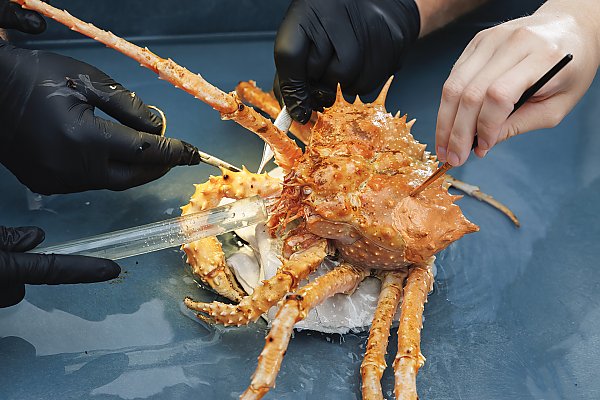Baby Giant Sea Bass Now On View

Credit: ©Michael Couffer/Grey Owl Pictures, INC.
February 17, 2017

A baby giant sea bass that hatched at the Aquarium in October is now on public view in the Redondo Canyon exhibit in the Southern California/Baja Gallery on the first floor. This small fish was the result of a spawning event this past fall and was raised in a tank behind the scenes during its early months.
Giant sea bass are difficult to breed in aquarium environments. Only one other facility has had preliminary success in breeding giant sea bass. The Aquarium was able to raise one to forty-three days in 2003, but this year’s surviving fish has now surpassed that milestone, and husbandry staff members foresee its long-term survival.
At its hatching, the baby fish was just 4 millimeters long. Now, it is about two inches long and is fed on a diet of mysid shrimp. It will take about fifteen years for this juvenile to reach its full adult size (up to 6 feet long and 500 pounds). At that age, aquarists may be able to determine its sex based on any mating behavior it displays. Until that time, it is not possible to determine its sex by sight.
The Aquarium is home to three adult giant sea bass, a well-established male-female pair that has been at the Aquarium since its opening and a younger male. All three are residents of the Honda Blue Cavern exhibit in the Great Hall. The well-established pair are the baby’s parents. Senior Aquarist Nicole Leier gathered research on breeding this species in an aquarium environment, and she and other husbandry staff members made several adjustments to the Blue Cavern exhibit to achieve success. You can read her account of this process on a recent In Focus blog post for the Aquarium.
The Aquarium’s work to reproduce this species is particularly important because giant sea bass are listed as Critically Endangered on the International Union for Conservation of Nature’s Red List.







